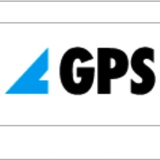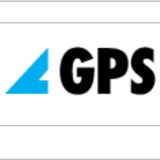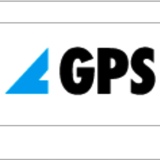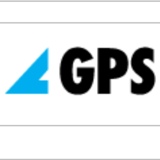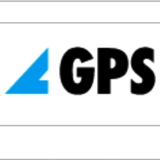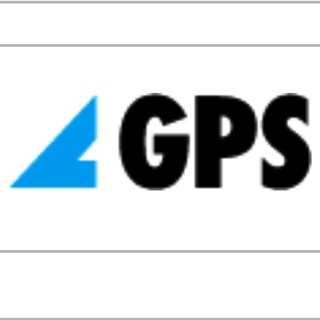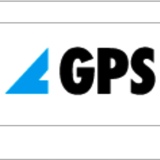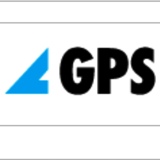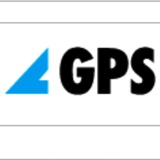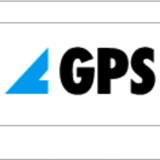Information
-
Audit reference number (automatic)
-
Description of area/cell/process being audited
-
Site and Department
-
Scope of the audit (See audit plan and add to this as necessary)
-
Conducted by
-
Conducted on
-
Are there actions which require close out?
-
Revisit date (if there are actions to close out)
General Help
-
Take photographs or sketch to help clarify any issues you identify as required in each section. Don't forget to record the good points as well.
You must select compliance level from the options:
OK = Satisfactory (It is working effectively and reliably)
NCR = Non-Conforming (It is NOT working effectively)
OBS = Observation (there may be a slight deviation but generally is working well)
OFI = Opportunity for Improvement (ideas that could make it better than it is)
N/A = Not Applicable (this question does not apply to the area being audited) -
Please ensure you write down, or photograph: serial numbers, reference numbers, order numbers etc to ensure that the audit is repeatable
-
In order to allow typing information against a question, tap on the text of the question to open the text input box
People Issues
-
OK = Satisfactory (It is working effectively and reliably)
NCR = Non-Conforming (It is NOT working effectively)
OBS = Observation (there may be a slight deviation but generally is working well)
OFI = Opportunity for Improvement (ideas that could make it better than it is)
N/A = Not Applicable (this question does not apply to the area being audited
1. People issues (communication)
-
Guidance:
Look for evidence of: team talks, noticeboards, (check information is up to date and relevant), KPI graphs, departmental performance figures, information regarding the performance of the quality management system, environmental management system, or health and safety management system (such as accidents, scrap, complaints, OTIF, etc) -
Is there evidence of communication within the department? (Describe/photograph)
-
Action(s) required:
you must also identify who is responsible for the action(s)
Action(s)
-
Action
-
Responsibility:
-
Has action been taken to address the action, and to a satisfactory level?
-
Verified by
2. People Issues (competence and capability)
-
Guidance:
Look for examples of Young persons (Under 18 years of age) and pregnant workers (health and safety concerns). These two groups are especially at risk. Young persons because of inexperience and immaturity and pregnancy can affect ability to carry out certain tasks safely (for example manual handling)
Look for evidence of employees having undergone induction training, quality, environmental and health and safety awareness training, and training for the specific tasks they are performing.
Look especially for tasks which require specific skills or qualification such as driving fork lift trucks, electrical work (qualified electricians for example), changing grinding wheels etc
Competency can be based on education, training, skills, and/or experience. Look for evidence of records of training - are they suitable and sufficient? Are there issues with understanding (for example language barriers). Is there evidence of stress or violent behaviour? is there evidence of unsafe or environmentally unsound behaviour or practice?
Are any of the workers disabled or otherwise disadvantaged in performing the task(s)?
Is there evidence of lack of competence or capability affecting product quality or customer service? Is there evidence of ongoing performance appraisal on persons within the department or area being audited? Is there adequate supervision? -
Are personnel performing work which could impact on the customer, service, health and safety, or the environment, competent and capable?<br>
-
Action(s) required:
you must also identify who is responsible for the action(s)
Action(s)
-
Action
-
Responsibility:
-
Has action been taken to address the action, and to a satisfactory level?
-
Verified by
3. People Issues (responsibility and authority)
-
Guidance:
Is it clear what each person's responsibility and authority level is? (Is there evidence of decisions not being made or tasks not been done, because no one is quite sure whose job it is?).
Are the roles clearly defined and documented within a job profile, and if not, how are people informed about their responsibilities and authority levels?
How is work allocated such that engineers know who is doing what tasks? -
Is responsibility and authority clearly defined?
-
Action(s) required:
you must also identify who is responsible for the action(s)
Action(s)
-
Action
-
Responsibility:
-
Has action been taken to address the action, and to a satisfactory level?
-
Verified by
Material Issues
-
OK = Satisfactory (It is working effectively and reliably)
NCR = Non-Conforming (It is NOT working effectively)
OBS = Observation (there may be a slight deviation but generally is working well)
OFI = Opportunity for Improvement (ideas that could make it better than it is)
N/A = Not Applicable (this question does not apply to the area being audited
1. Materials (Hazards)
-
Guidance:
Look for Toxic, Irritant, Sensitising, Corrosive or Carcinogenic chemicals that are in use (including the use of local exhaust ventilation). Check that chemicals are properly labelled (or otherwise identified so it is clear what the contents are and what the corresponding hazards are)
Check that they are listed in the COSHH register, and are used in a safe manner (using the PPE that is recommended).
Check for signs of use of water which might be stale or contain bacteria (such as cooling water) and for signs of water spray in air (Legionella risk)
Look for environmental hazards also, for example use of oils, chemicals hazardous to aquatic life and materials that can cause dust or fume with the resultant risk of explosion, fire or problems with inhalation. -
Are all chemicals in use on the COSHH register and suitably identified controlled to minimise H&S or Environmetal issues? Describe/photograph)
-
Action(s) required:
you must also identify who is responsible for the action(s)
Action(s)
-
Action
-
Responsibility:
-
Has action been taken to address the action, and to a satisfactory level?
-
Verified by
2. Materials (Safe Storage)
-
Guidance:
Check all material(s) storage. Is it safe? (not exceeding safe working loads for shelving, and safely and suitably stacked - for example stability and load distribution)
Is storage free from spills and leaks (for example granules on the floor)?
Is it secondary contained as needed?
Is packing in good condition (damaged boxes etc)?
Is storage such that it prevents damage or deterioration to the items concerned?
Does the material in use have a limited shelf life such that it could deteriorate and not function properly (for example seals/gaskets, cement etc) ?
Check for Safe storage of gas bottles including those in use - are they stable or locked against fixed structures etc. Are there minimal quantities outside of designated storage areas ? -
Are all materials stored in a safe manner? (Describe/photograph)
-
Action(s) required:
you must also identify who is responsible for the action(s)
Action(s)
-
Action
-
Responsibility:
-
Has action been taken to address the action, and to a satisfactory level?
-
Verified by
Equipment issues
-
OK = Satisfactory (It is working effectively and reliably)
NCR = Non-Conforming (It is NOT working effectively)
OBS = Observation (there may be a slight deviation but generally is working well)
OFI = Opportunity for Improvement (ideas that could make it better than it is)
N/A = Not Applicable (this question does not apply to the area being audited
1. Equipment (Accuracy and capability)
-
Guidance:
Is equipment and machinery in use suitable for its intended purpose and calibrated to ensure accuracy as necessary (if used to validate product quality, or measure environmental emissions or levels, or measure health and safety performance)?
Is equipment's performance consistently repeatable to ensure reliability of the process?
Examine items such as electrical meters, oil tank monitoring equipment (levels, alarms etc). -
Is equipment and machinery in use; suitable, calibrated and capable? (Describe/photograph)
-
Action(s) required:
you must also identify who is responsible for the action(s)
Action(s)
-
Action
-
Responsibility:
-
Has action been taken to address the action, and to a satisfactory level?
-
Verified by
2. Equipment (Safety and effectiveness)
-
Guidance:
Has equipment and machinery that is in use been assessed for PUWER (Provision and use of work equipment regulations) compliance? (For example, electrical tools, pillar drills, grinders, etc)
Has equipment or machinery been tested as necessary (for example PAT testing on portable appliances)?
Is all equipment or machinery in use suitably guarded, (with the need to use a tool to remove that guard), to prevent access to the dangerous parts of machinery? (eg grinding wheels)
Are all electrical cabinets and other high-voltage sources locked to prevent unauthorised access?
Any sign of unsafe equipment?
Look for examples where equipment or machinery has deteriorated due to lack of maintenance or attention, for example, missing or damaged guards, damaged casings, or cables, secondary containment full of rainwater, deterioration of bunds etc.
Look for examples where such deterioration could result in the efficiency or the capability of the equipment or machinery being compromised (eg rusty or damaged measuring equipment)
Check lifting equipment being used is checked and correctly colour coded -
Is equipment and machinery in use safe? (Describe/photograph)
-
Action(s) required:
you must also identify who is responsible for the action(s)
Action(s)
-
Action
-
Responsibility:
-
Has action been taken to address the action, and to a satisfactory level?
-
Verified by
3. Equipment (Training and authorisation)
-
Guidance:
Are personnel using equipment suitably trained or authorised to use such equipment (for example forklift trucks, ladders, changing grinding wheels etc)?
Check personnel are capable of using things like test and measuring equipment correctly
Do records demonstrate that personal have been trained to operate the process or equipment for the reasons of quality, environmental implications and health and safety implications.
Check, for example, qualification for FLTs, (changing grinding wheels, use of MEWP's (Mobile elevated work platform) etc -
Is all equipment and machinery used by suitably trained and authorised personnel? Describe/photograph)
-
Action(s) required:
you must also identify who is responsible for the action(s)
Action(s)
-
Action
-
Responsibility:
-
Has action been taken to address the action, and to a satisfactory level?
-
Verified by
Environment issues
-
OK = Satisfactory (It is working effectively and reliably)
NCR = Non-Conforming (It is NOT working effectively)
OBS = Observation (there may be a slight deviation but generally is working well)
OFI = Opportunity for Improvement (ideas that could make it better than it is)
N/A = Not Applicable (this question does not apply to the area being audited
1. Environment (Infrastructure of the building and environmental conditions)
-
Guidance:
Is there evidence of unsafe structural elements of the building (e.g. walls, doors, windows, floor etc)? For example, is the floor level and free from damage, obstruction, or slip/trip hazards.
Are the walls/windows/doorframes, secure and free from elements which could fall off or fail to operate? (For example falling brickwork)
Look at the abestos management survey and confirm there is a regular monitoring of the condition of asbestos.
Look at records of action taken to resolve issues related to asbestos
Have building and demolition surveys been carried out for any building work that has been undertaken?
Is the "in process", or storage temperature, humidity, or other environmental conditions such that it prevents problems with process or equipment? -
Are there issues with the building infrastructure or environmental conditions? Describe/photograph)
-
Action(s) required:
you must also identify who is responsible for the action(s)
Action(s)
-
Action
-
Responsibility:
-
Has action been taken to address the action, and to a satisfactory level?
-
Verified by
2. Environment (access and egress and ergonomics)
-
Guidance:
Is there free access and egress to the area being audited? Are fire exits clear? Are there constraints to carrying out tasks due to space or ergonomics of the process? -
Is there sufficient access and egress to the work areas? Are there issues with the ergonomics in the work area?(Describe/photograph)
-
Action(s) required:
you must also identify who is responsible for the action(s)
Action(s)
-
Action
-
Responsibility:
-
Has action been taken to address the action, and to a satisfactory level?
-
Verified by
3. Environment (waste, energy and emissions)
-
Guidance:
Are wastes from the process properly segregated and managed? Are recyclable wastes (cardboard, plastics, metal etc) and hazardous wastes (oil contaminated) for example, disposed of in the correct containers?
Are personnel clear on the correct disposal points?
Is equipment turned off when not in use?
Is there any evidence of emissions during the process?
Check also the following waste streams:
Fluorescent light tubes, batteries, WEEE (Waste Electrical and Electronic Equipment)
Check hazardous waste (oil contaminated for example) created by maintenance is correctly disposed of
(Check waste container outside maintenance area for incorrect waste segregation) -
Are wastes, energy, and emissions properly managed? (Describe/photograph)
-
Action(s) required:
you must also identify who is responsible for the action(s)
Action(s)
-
Action
-
Responsibility:
-
Has action been taken to address the action, and to a satisfactory level?
-
Verified by
4. Environment (Storage/racking)
-
Guidance:
Is storage and racking suitable for the load and safe? (Check racking is marked clearly with the safe working load, is secure so it cannot topple over, and it is properly loaded) ?
Are legs of racking protected from damage?
Ensure that heavy and light items are distributed such that the risks of manual handling are minimised and the stability of the storage is maintained
Ensure that storage is properly stacked/located (i.e. Items are not likely to fall off shelves)
Check for unsuitable storage - for example wooden pallets used to support a load greater than their capacity or condition warrants. -
Is storage/racking suitably managed? (Describe/photograph)
-
Action(s) required:
you must also identify who is responsible for the action(s)
Action(s)
-
Action
-
Responsibility:
-
Has action been taken to address the action, and to a satisfactory level?
-
Verified by
5. Environment (Fire Hazard)
-
Guidance:
Is there any fire hazard in the area (for example: flammable chemicals in use, cardboard/wood or other flammable materials stored in such a way that they may cause of fire - such as against a hot surface)?
Is there any source of ignition in the area (such as welding, brazing or heaters)?
Is the evidence of blocked cooling systems or ventilation on equipment?
Has a fire risk assessment been conducted in the area/department? -
Is there any risk of fire? (Describe/photograph)
-
Action(s) required:
you must also identify who is responsible for the action(s)
Action(s)
-
Action
-
Responsibility:
-
Has action been taken to address the action, and to a satisfactory level?
-
Verified by
Process Issues
-
OK = Satisfactory (It is working effectively and reliably)
NCR = Non-Conforming (It is NOT working effectively)
OBS = Observation (there may be a slight deviation but generally is working well)
OFI = Opportunity for Improvement (ideas that could make it better than it is)
N/A = Not Applicable (this question does not apply to the area being audited
1. Process (change management)
-
Guidance:
If there is change in the department, is the integrity of department procedures/processes maintained?
Look for tasks not been carried out because someone is no longer in the department, changes in priority because of change of leadership or responsibility, or new manufacturing processes/departmental processes being implemented with associated learning curves. -
Have there been any changes in the department/area being audited, and what impact has it had?(Describe/photograph)
-
Action(s) required:
you must also identify who is responsible for the action(s)
Action(s)
-
Action
-
Responsibility:
-
Has action been taken to address the action, and to a satisfactory level?
-
Verified by
2. Process (Monitoring and measurement)
-
Guidance:
How is workload monitored and managed in terms of measurement of performance and achievement of objectives?
Look at areas such as achievement of repair and maintenance timescales and the effect on OEE (Overall Equipment Effectiveness). Consider also planned preventive maintenance activities, and areas such as level checks etc.
Look at examinations which are required to be undertaken - pick from three of the following areas (alternate from previous audits to ensure all areas ate covered):-
1. Pressure vessels
2. Asbestos management
3. Fire extinguisher andy sprinklers, and alarms Etc
4. Portable electrical equipment
5. Fixed electrical installations
6. Water treatment and monitoring (including Legionella dip slides and formal external monitoring)
7. Local exhaust ventilation checks
8. Lifting equipment checks such as cranes etc
9. Formal checks on moulding machines
10. Air conditioning/cooling systems monitoring (including monitoring for phase out of R22 gases, and building energy survey)
11. Monitoring of oil storage bunds and pipework and the monitoring equipment that goes with them (eg level indicators and alarms). This should include pipework and storage integrity checks where they are underground. -
Are all relevant checks and measurements being undertaken and suitably analysed?(Describe/photograph)
-
Action(s) required:
you must also identify who is responsible for the action(s)
Action(s)
-
Action
-
Responsibility:
-
Has action been taken to address the action, and to a satisfactory level?
-
Verified by
3. Process (Legal/standards compliance)
-
Guidance:
Is the legislation/standard/specification to which the process must comply known, documented and available? (for example electrical codes and regulations, asbestos, oil storage regulations, etc)
Is the legislation (if applicable) recorded within the legal register?
Consider hazardous processes, for example working in confined spaces, working at height, compliance to gas standards, electrical work, building and demolition work -
Are applicable legislation or standards/specifications known? Are they available? Are they complied with?(Describe/photograph)
-
Action(s) required:
you must also identify who is responsible for the action(s)
Action(s)
-
Action
-
Responsibility:
-
Has action been taken to address the action, and to a satisfactory level?
-
Verified by
4. Process (documentation)
-
Guidance:
Is the process suitably documented via a process flow chart, work instruction, standard operation, specification sheet, quality, environmental or health and safety alert, booklet etc
If not documented, is the person performing the process suitably trained and/or experienced or supervised/monitored)?
Are all documents controlled in such a way that changes are identified, the document having an issue/revision number and date, and is it approved prior to issue?
Are documents legible and identifiable?
Are documents of external origin (such as customer drawings/specifications) suitably controlled?
Applicable processes are
QMS - P19 series of process flows on the intranet
H&S processes - C02 (Working at height), C04 (Confined spaces), C05 (Contractors and visitors), C08 (Electricity), C12 (Isolation procedures), C21 (Pressure Systems), C26 (Statutory Examinations)
Environmental processes - 05-EM-05 (Oil spills) and 05-EM-11 (Handling environmentally sensitive materials) -
Is the process suitably documented and is the input/output clearly defined? (Describe/photograph)
-
Action(s) required:
you must also identify who is responsible for the action(s)
Action(s)
-
Action
-
Responsibility:
-
Has action been taken to address the action, and to a satisfactory level?
-
Verified by
5. Process (Risk assessment/aspects evaluation)
-
Guidance:
Are processes being undertaken risk assessed? (Examples of risk assessment are: general, task specific, manual handling, COSHH, PUWER, VDU, explosive atmosphere, young or pregnant workers, noise, fire etc (see section c23 in the health and safety management system)
Are there any outstanding actions from any such assessments?
Are the processes being undertaken covered by the environmental aspect evaluation if applicable? (See EM-01 - and the environmental aspects evaluation database - in the environmental management system) -
Are there suitable risk assessments? And are activities covered in environmental aspect evaluation? Are actions from such assessments dealt with? (Describe/photograph)
-
Action(s) required:
you must also identify who is responsible for the action(s)
Action(s)
-
Action
-
Responsibility:
-
Has action been taken to address the action, and to a satisfactory level?
-
Verified by
6. Process (Data and records)
-
Guidance:
Are all data and records, created as part of the process, suitably controlled? (Identified, backed up and suitably stored, with clearly documented disposal and retention periods)
The control of records should include electronic records as well as paper records.
Identify the records kept during the audit, and ensure that they are properly controlled
-
Are all data records suitably controlled? (Describe/photograph)
-
Action(s) required:
you must also identify who is responsible for the action(s)
Action(s)
-
Action
-
Responsibility:
-
Has action been taken to address the action, and to a satisfactory level?
-
Verified by
7. Process (PPE - Personal protective equipment)
-
Guidance:
Are all personnel wearing PPE which is required for the process (take note of signs and process requirements to identify whether people should be wearing hearing protection eye protection etc)?
Are people suitably trained and made aware of how to use the PPE? IS PPE suitable for its intended purpose (for example a dust mask being used for solvent use, cotton gloves for oil etc)? -
Is a PPE being worn when required? Is it suitable and being correctly used? (Describe/photograph)
-
Action(s) required:
you must also identify who is responsible for the action(s)
Action(s)
-
Action
-
Responsibility:
-
Has action been taken to address the action, and to a satisfactory level?
-
Verified by
8. Process (unsafe acts/conditions and accidents)
-
Guidance:
A large proportion of concerns on the concern log end up with maintenance action(s). Similarly actions from external audits such as the environmental audit, environmental legal compliance audit etc result in action on the maintenance function (logged by simplifi system).
Check how these are managed and prioritised within the maintenance department, are any outstanding?
Have there been any health and safety, environmental, or quality concerns raised in the maintenance area in the last six months? Have there been any accidents in the area in the last six months?
If so, has action been taken to resolve the problems? -
Have there been accidents or near misses related to the process? If so what action(s) have been taken?(Describe/photograph)
-
Action(s) required:
you must also identify who is responsible for the action(s)
Action(s)
-
Action
-
Responsibility:
-
Has action been taken to address the action, and to a satisfactory level?
-
Verified by
9. Process (Emergency)
-
Guidance:
Is there evidence of emergency preparedness - spill kits, fire extinguishers, fire exits, knowledge of emergency plan, knowledge of what to do in the event of a fire, spill, accident etc?
Is all emergency equipment in operational condition (e.g. spill kits full, spill mats available, bunds not full of water, fire extinguishers not discharged etc)? -
Is there suitable emergency preparedness?(Describe/photograph)
-
Action(s) required:
you must also identify who is responsible for the action(s)
Action(s)
-
Action
-
Responsibility:
-
Has action been taken to address the action, and to a satisfactory level?
-
Verified by
10. Process (Outsourcing)
-
Guidance:
Are any processes or parts of processes outsourced? If so how are these controlled to ensure compliance to customer requirements, environmental compliance, health and safety compliance, etc)? (Examples might be calibration of RMU's etc, building work, machine repair and maintenance or servicing, )
If these outsourced activities are carried out on our premises, is the contractor managed through permits to work etc (See C05). (eg visitors to repair moulding machines, lights, heaters)
How do we ensure that contractors working on our premises comply with environmental requirements (such a waste, discharges, emissions etc), or health and safety requirements (such as PUWER, working at height etc).
How do we confirm the quality of the outsourced operation?
(eg confirmation of repair, service or calibration)
How is the outsourced activity approved and controlled? -
Is anything outsourced? if so how is it controlled? (Describe/photograph)
-
Action(s) required:
you must also identify who is responsible for the action(s)
Action(s)
-
Action
-
Responsibility:
-
Has action been taken to address the action, and to a satisfactory level?
-
Verified by
Specific department or process questions
-
OK = Satisfactory (It is working effectively and reliably)
NCR = Non-Conforming (It is NOT working effectively)
OBS = Observation (there may be a slight deviation but generally is working well)
OFI = Opportunity for Improvement (ideas that could make it better than it is)
N/A = Not Applicable (this question does not apply to the area being audited
Process specific questions based on the process flows and ISO requirements
1. Calibration
-
Guidance:
There is various equipment which requires external calibration, which is managed by the maintenance function. Check to see how this is managed, and whether there's any equipment which is out of calibration. What about equipment which is linked to a production cell? for example the RMU's used in the tapping tee cells
Is equipment such as level meters etc on oil tanks and effluent tanks verified to ensure is accurate and functional? -
How is calibration of externally calibrated equipment such as ohmmeters etc managed?
-
Action(s) required:
you must also identify who is responsible for the action(s)
Action(s)
-
Action
-
Responsibility:
-
Has action been taken to address the action, and to a satisfactory level?
-
Verified by
2. Statutory examinations
-
Guidance:
Pick at least THREE from the following list and check that the inspections are carried out as required by the process C25. Check that there are suitable records and they are carried out as required by the process
- Portable appliance testing
- Fixed electrical installations
- Pressure systems
- Local exhaust ventilation systems
- Cooling systems and cooling water (Legionella)
- Asbestos
- injection moulding machines
- Refrigerant - plans for phase out of r22 refrigerants (not available even as recycled gas after 2014) monitoring of cooling systems and chillers and air conditioning efficiency survey
- Lifting equipment (cranes, eye bolts, slings, chains etc) - audit with tool fitting supervisor)
- condition of oil storage tanks/bunds and pipework
- monitoring of discharges/interceptors/brook water quality -
Are all required statutory examinations and inspections carried out?
-
Action(s) required:
you must also identify who is responsible for the action(s)
Action(s)
-
Action
-
Responsibility:
-
Has action been taken to address the action, and to a satisfactory level?
-
Verified by
3. Contractor management
-
Guidance:
Check there is a permit to work for all contractors on site. Check to ensure that the permits are appropriate for example: hot work permit, permit to work at height, permit to work on high-voltage supplies, permit to work in confined spaces (see health and safety procedure C 21)
Check the contractor is segregating his waste correctly, and that that they are working in compliance with any methods statements or risk assessments etc including the use of PPE etc
Ensure contractors carrying out work on the fabric of the building have been shown appropriate asbestos management surveys etc. Ensure that prior to contractors carrying out building work, a building and demolition survey has been conducted first. -
Are Contractors on site suitably managed via permit to work and risk assessment/method statement
-
Action(s) required:
you must also identify who is responsible for the action(s)
Action(s)
-
Action
-
Responsibility:
-
Has action been taken to address the action, and to a satisfactory level?
-
Verified by
4. Maintenance work - Safety precautions
-
Guidance:
Check that maintenance activities are being undertaken safely in accordance with appropriate safe systems of work. For example: electrical isolation procedures (c08, c12), lock-off procedures (To prevent inadvertent start-up or operation of equipment whilst it is being maintained) for example prior to entering robotic cells etc.
Are the maintenance personnel using appropriate personal protective equipment (for example hardhats in the akatherm cell)? -
Is all maintenance activity carried out under appropriate safe systems of work?
-
Action(s) required:
you must also identify who is responsible for the action(s)
Action(s)
-
Action
-
Responsibility:
-
Has action been taken to address the action, and to a satisfactory level?
-
Verified by
Additional Checks
Additional checklist items:
-
Additional checklist item
-
Additional Check Details
-
Compliant?
-
Action(s) required:
you must also identify who is responsible for the action(s)
Action(s)
-
Action
-
Responsibility:
-
Has action been taken to address the action, and to a satisfactory level?
-
Verified by
